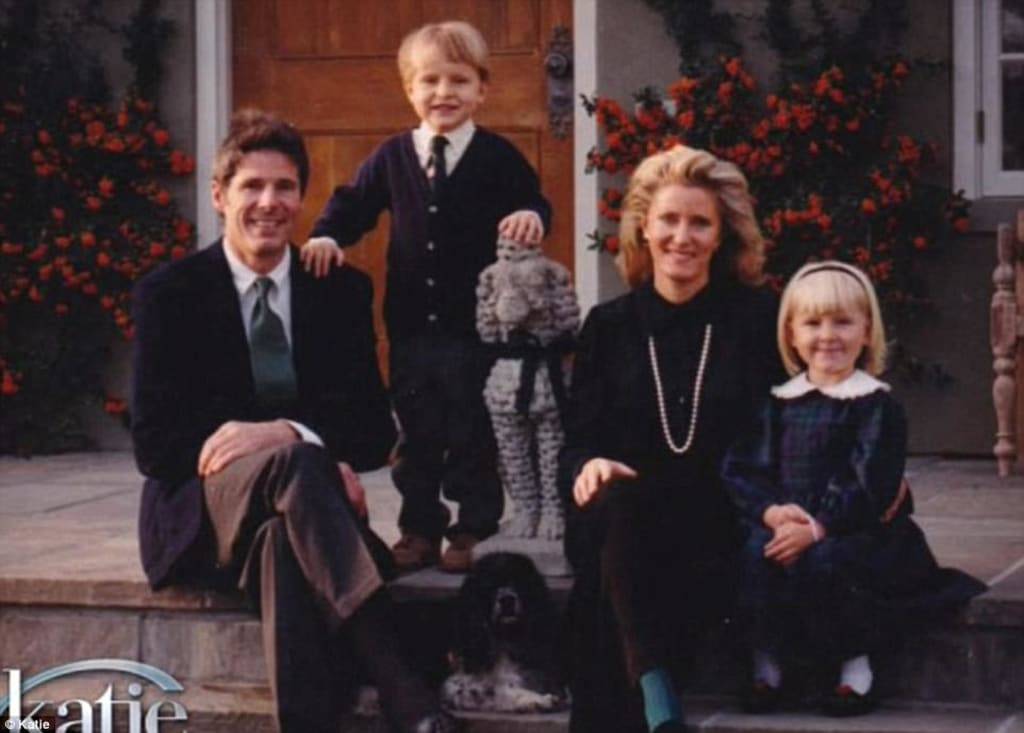Imagine stepping into a mansion on a crisp October night, the kind of place where wealth whispers in every corner-polished floors, sprawling rooms, the faint hum of luxury. It’s 2001, in East Hampton, New York, one of the most exclusive enclaves on Long Island. Inside, Ted Ammon, a millionaire financier, is alone. The alarm is off. The house is still. By morning, he’s gone-found lifeless, his story cut short by a brutal act. Who could do this? And why? That question still haunts the Hamptons, a place where secrets hide behind manicured hedges.
I’ve always been drawn to stories like this, ones that peel back the glossy surface of success to reveal the raw, messy human truths underneath. There’s something about the Ted Ammon case that grips you-not just the murder, but the tangled web of love, betrayal, and ambition that led to it. It’s a story that feels almost too cinematic, yet it’s painfully real. Let’s dive in, shall we?
Ted Ammon wasn’t born with a silver spoon. Growing up in Pittsburgh in the 1950s, he was the son of a pension coordinator and a sharp-witted homemaker who pushed him to dream big. You can picture young Ted, maybe sitting at the kitchen table, his mother Betty urging him to aim higher than the steady, predictable life around them. He had this spark-whether it was mimicking his sister’s piano melodies after hearing them just once or excelling in school and sports. He wasn’t just talented; he was relentless. It’s the kind of drive that makes you wonder: what would I have done with that kind of fire?
By the time Ted hit Bucknell University in 1967, he was already a force-charismatic, confident, the guy who could lead a fraternity, play varsity lacrosse, and still charm his professors. He started in architecture but switched to economics, graduating in 1971. From there, it was a straight shot to Wall Street. He joined Bank of America’s executive training program, and-get this-without ever stepping foot in law school, he passed the New York Bar Exam on his first try. I mean, who does that? It’s the kind of story you’d tell at a dinner party, half-impressed, half-jealous.
Ted’s life seemed to hum with possibility. In 1973, he married Randy Day, a fellow go-getter. They jetted off to London, chasing big careers and bigger dreams. But you know how it goes-success can be a double-edged sword. The long hours, the constant travel, it wore them down. By 1983, their marriage had frayed into something more like a friendship. Randy called it quits, and Ted, ever the optimist, threw himself into his work. He joined KKR, a private equity giant, and helped orchestrate the $31 billion buyout of RJR Nabisco-a deal so legendary it inspired a book, Barbarians at the Gate. Ted wasn’t just playing the game; he was rewriting the rules.
But life has a way of throwing curveballs, doesn’t it? In 1984, Ted missed an apartment viewing in New York because of work. When he called to apologize, he met Generosa, the real estate agent on the other end of the line. She was younger, vibrant, with an artistic flair that lit up the room. They grabbed coffee, and just like that, sparks flew. Within a month, they were living together. It’s the kind of whirlwind romance that makes you smile-until you see where it’s headed.
Generosa was complicated, to put it mildly. Born in California, she grew up in a chaotic home, her mother Mary a whirlwind of parties and fleeting romances. Generosa never knew her father, an Italian sailor who vanished after a brief fling. Her mother’s indifference and suspected bipolar disorder left scars. By 10, Generosa was an orphan, her mother lost to cancer, her siblings scattered. She bounced between relatives, carrying both resilience and a hunger for something more-wealth, recognition, a place in the world. You can’t help but feel for her, you know? That kind of childhood shapes you, for better or worse.
When Ted and Generosa married in 1986, it seemed like a fresh start. They built a life of glamour-fancy parties, a photography studio for her art, an East Hampton estate that screamed success. But cracks formed fast. Generosa’s temper was explosive, her jealousy all-consuming. She’d check Ted’s phone, read his letters, accuse him of affairs with little evidence. Ted, patient at first, started to buckle under the strain. By the late 1990s, he was confiding in friends about divorce. Their move to a grand manor in England in 1999 was supposed to be a reset, but it only widened the gap. Ted commuted to New York; Generosa grew paranoid. She found a divorce lawyer’s invoice and hired private investigators, convinced he was cheating. The trust was gone.
Then came Daniel Pelosi. Picture this: it’s 2000, and Generosa’s renovating a Manhattan townhouse Ted bought her during their bitter divorce battle. Enter Daniel, a contractor with a rough past-assault convictions, drunk driving arrests, and a knack for trouble. He was 38, seven years her junior, and Ted hated him on sight. Not just because Daniel was cozying up to Generosa, but because he was around their adopted twins, Greg and Alexa. Ted saw danger; Generosa saw an opportunity to needle her soon-to-be ex. It’s the kind of dynamic that makes you wince-love twisted into a weapon.
By October 2001, Ted and Generosa’s divorce was a war zone. She demanded half his fortune, claiming it was $300 million (it was closer to $100 million). Ted fought back, withholding child support and slashing his reported net worth to $30 million. The East Hampton mansion, once a symbol of their success, became a battleground. On October 20th, Ted was found dead there-naked, his skull fractured from multiple blows. No forced entry. The alarm disabled. It felt personal, like someone who knew the house inside and out.
Suspicion fell on Generosa immediately. She inherited $97 million and married Daniel just three months later. Witnesses claimed she’d offered $50,000 to have Ted beaten. Others said Daniel bragged about the murder, even asking his father how to dispose of evidence. A friend, Christopher Parrino, testified that on the night of the killing, Daniel returned to their car covered in blood, muttering, “I think he’s dead.” Chilling, right? But no physical evidence tied Daniel to the crime. It was all hearsay, whispers, and boasts.
Generosa’s story took a darker turn. Diagnosed with breast cancer, she grew erratic, accusing Ted of hiding a lump her doctor found years earlier. In 2003, prosecutors offered her immunity to testify against Daniel. She refused, insisting he was innocent. She died that May, leaving her estate to the twins and their nanny, cutting Daniel out save for a $2 million postnuptial agreement. Daniel fought it and lost. In 2004, he faced trial for Ted’s murder. He admitted being at the house that night but pointed the finger at Generosa. The jury didn’t buy it. On January 25, 2005, Daniel Pelosi was convicted and sentenced to 25 years to life.
The twins, Greg and Alexa, were left to pick up the pieces. Raised by Ted’s sister, Sandra, they found stability amidst the chaos. In 2012, they co-produced a documentary, 59 Middle Lane, revisiting their father’s murder and their Ukrainian roots. Now in their 30s, they remember Ted as kind, steady, the anchor they lost. Their mother? That’s tougher. They admire her charisma but can’t ignore the destruction she left behind.
This case sticks with me. It’s not just about a murder; it’s about how love can curdle into something dark, how wealth can amplify our worst impulses. Ted Ammon built an empire, but in the end, it couldn’t save him. What do you think-could this have been avoided, or was tragedy inevitable? I’m still wrestling with that one.


